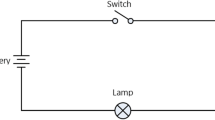Abstract
This article aims to put a basis for formal definitions of conceptual normalisation. In the following it briefly describes our approach, and then proposes the definitions, and eventually shows how relational and object normalisation are connected with it. The primary objective of this contribution is a definition of four basic conceptual forms, both formally and informally. Further it elaborates a connection between them and relational normal forms, on one hand, and object normal forms, on the other hand. In the end, the Author argues for herein proposed ideas and definitions.
Access this chapter
Tax calculation will be finalised at checkout
Purchases are for personal use only
Preview
Unable to display preview. Download preview PDF.
Similar content being viewed by others
References
Molhanec, M.: A Contribution to User Interface Modelling Based on Graph Transformations Approach. In: CEUR Workshop Proceedings, vol. 458 (2009); ISSN 1613-0073
Molhanec, M.: Towards the Conceptual Normalisation. In: CEUR Workshop Proceedings, vol. 601, pp. 133–141 (2010); ISSN 1613-0073
Molhanec, M.: Some Reasoning behind Conceptual Normalisation. In: Information Systems Development 2010, pp. 1–10. Springer, Heidelberg (2010)
Molhanec, M.: Úvod do konceptuální normalizace. In: Tvorba softwaru 2010, pp. 141–149. VŠB - Technická univerzita Ostrava, Ostrava (2010); ISBN 978-80-248-2225-9
Molhanec, M.: Krátká úvaha o normalizaci. In: Objekty 2009, pp. 149–160. Univerzita Hradec Králové, Hradec Králové (2009); ISBN 978-80-7435-009-2
Molhanec, M.: Ontologické základy konceptuální normalizace. In: Objekty 2006, pp. 81–90. Technická universita Ostrava - Vysoká škola báňská, Ostrava (2006)
Codd, E.F.: A Relational Model of Data for Large Shared Data Banks. Communications of the ACM 13(6), 377–387 (1970), doi:10.1145/362384.362685
Codd, E.F.: Further Normalization of the Data Base Relational Model. Presented at Courant Computer Science Symposia Series 6, Data Base Systems, New York City, (May 24-25, 1971); IBM Research Report RJ909 (August 31, 1971) (1972)
Codd, E. F.: Recent Investigations into Relational Data Base Systems. IBM Research Report RJ1385 (April 23, 1974); Republished in Proc. 1974 Congress Stockholm, Sweden. North-Holland, New York (1974)
Chen, P.: The Entity-Relationship model- toward a unified view of data. ACM Transactions on Database Systems, 9–36 (1976)
Benci, E., Bodart, F., Bogaert, H., Cabanes, A.: Concepts for the design of a conceptual schema. In: Nijssen, G.M. (ed.) Modelling in Database Management Systems, pp. 181–200. North-Holland, Amsterdam (1976)
Halpin, T.: What is an elementary fact? In: Nijssen, G.M., Sharp, J. (eds.) Proceedings first NIAM-ISDM Working Conference (1993)
Picka, M., Pergl, R.: Gradual modeling of information system - Model of method expressed as transitions between concepts. In: ICEIS 2006: Proceedings of the Eighth International Conference on Enterprise Information Systems, Portugal, pp. 538–541 (2006); ISBN: 972-8865-43-0
Scott, A.: Building Object Applications That Work, Your Step-By-Step Handbook for Developing Robust Systems Using Object Technology. Cambridge University Press/SIGS Books (1997); ISBN 0521-64826-2
Jan, N.H.: Nuts - an online column about software design, http://www.sum-it.nl/en200239.html
Wu, Y., Aoying, Z.: Research on Normalization Design for Complex Object Schemes. In: Proceedings of ICII 2001 Info-Tech and Info-Net, Beijing, vol. 5, pp. 101–106 (2001)
Zahir, T., John, S., Stefano, S.: Object Normal Forms and Dependency Constraints for Object-Oriented Schemata. ACM Transactions on Database Systems 22(4), 513–569 (1997)
Khodorkovsky, V.V.: On Normalization of Relations in Databases. Programming and Computer Software 28(1), 41–52 (2002)
Molhanec, M., Merunka, V.: Object normalization as the contribution to the area of formal methods of object-oriented database design. In: Advances in Computer and Information Sciences and Engineering, pp. 100–104. Springer Science+Business Media, Berlin (2007); ISBN 978-1-4020-8740-0
Guizzardi, G.: Ontological Foundations for Structural Conceptual Models, PhD Thesis (CUM LAUDE), University of Twente, The Netherlands. Published as the book Ontological Foundations for Structural Conceptual Models., Telematica Instituut Fundamental Research Series No. 15, ISBN 90-75176-81-3 ISSN 1388-1795
Heller, B., Herre, H.: Ontological Categories in GOL. Axiomathes 14(1), 57–76 (2004)
Quine, W.V.O.: Ontological relativity’ and Other Essays. Columbia University Press, New York (1969)
Guizzardi, G., Wagner, G.: Some Applications of a Unified Foundational Ontology in Business Modeling. In: Rosemann, M., Green(, P. (eds.) Ontologies and Business Systems Analysis. IDEA Publisher
Knott, R.P., Merunka, V., Polak, J.: The BORM methodology: a third-generation fully object-oriented methodology. Knowledge-Based Systems 16(2), 77–89 (2003); ISSN 0950-7051
Scott, A.: The Elements of UML(TM) 2.0 Style. Cambridge University Press, New York (2005); ISBN: 0521616786
Knott, R.P., Merunka, V., Polak, J.: The BORM Method: A Third Generation Object-Oriented Methodology. In: Liu, L., Roussev, B. (eds.) Management of the Object-Oriented Development Process, pp. 337–360 (2006); ISBN 9781591406044
Author information
Authors and Affiliations
Editor information
Editors and Affiliations
Rights and permissions
Copyright information
© 2011 Springer-Verlag Berlin Heidelberg
About this paper
Cite this paper
Molhanec, M. (2011). Conceptual Normalisation Formalised. In: Barjis, J., Eldabi, T., Gupta, A. (eds) Enterprise and Organizational Modeling and Simulation. EOMAS 2011. Lecture Notes in Business Information Processing, vol 88. Springer, Berlin, Heidelberg. https://doi.org/10.1007/978-3-642-24175-8_12
Download citation
DOI: https://doi.org/10.1007/978-3-642-24175-8_12
Publisher Name: Springer, Berlin, Heidelberg
Print ISBN: 978-3-642-24174-1
Online ISBN: 978-3-642-24175-8
eBook Packages: Computer ScienceComputer Science (R0)




